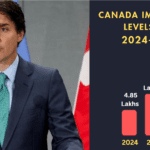Saskatchewan expands immigration eligibility under its PNPSaskatchewan has stated that it would broaden the province’s eligibility for workers to apply for permanent residency (PR) through the Saskatchewan Immigrant Nominee Program (SINP), Saskatchewan’s Provincial Nominee Program (PNP).
Workers in intermediate and lower-skilled occupations with positions inside the province are now eligible for the SINP’s Existing Work Permit stream, provided they match the basic eligibility criteria for both the stream and the SINP as a whole. The extension of acceptable occupations for PR means that permit holders from over 279 different occupations, including truck drivers, farm labourers, retail sales personnel, nurses’ aides, and many more, are now eligible to stay permanently in Saskatchewan. Previously, only high-skilled (TEER 0,1,2, or 3) and defined trades entrants could apply for PR through the stream.
Note: The Training, Education, Experience, and Responsibilities (TEER) categories are the Canadian government’s approach for categorizing jobs in Canada based on these four components of each profession. These levels range from 0 (the most competent, managerial roles) to 5 (jobs with no formal education requirements, the least skilled).
To apply under the new enlarged stream, applicants must meet both stream-specific and general SINP eligibility requirements, which include: · An eligible open work permit/Labour Market Impact Assessment (LMIA) supported work permit, a francophone mobility work permit, or a Canadian Ukrainian Authorisation for Emergency Travel (CUAET) visa; ·A valid SINP job approval letter; Six months (780 hours) of full-time work experience in the same job provided in the job approval letter; ·Have a Canadian Language Benchmark (CLB) score of at least 4, if your job is in a TEER 4 or 5 occupation; and · An eligible Saskatchewan licensure if your occupation is regulated in Saskatchewan. Who is not eligible as a result of these changes?While the Existing Work Permit stream has expanded in eligibility, it is crucial to note that the following people are still unable to immigrate to Saskatchewan under this immigration route: · Food and beverage servers (asked instead to apply under the Hospitality Sector Pilot Project, or the Hard-to-Fill Skills Pilot); · Truck drivers (asked instead to apply under the Long Haul Truck Driver Project, or the Hard-to-Fill Skills Pilot); · Health professionals (asked instead to apply to the SINP Health Professional Sub-category); · Graduates currently working with a Post-Graduation Work Permit (PGWP) (asked instead to apply under the Saskatchewan Experience – Student Sub-category, or the International Skilled Worker – Employment Offer Sub-category); and · Refugee claimants claiming refugee status in Canada. Saskatchewan requires immigrants.Saskatchewan’s provincial government has reached an agreement with the federal government to raise its provincial allotment of immigration nominees for 2023, 2024, and 2025. This is in response to some of the most significant job openings in any jurisdiction in Canada. Saskatchewan now has over 16,000 job openings posted on various internet job boards, with over 112,000 more expected over the next five years.
#PNP #Saskatchewan immigrant nominee program #sinp
|
There was a problem playing this video.


